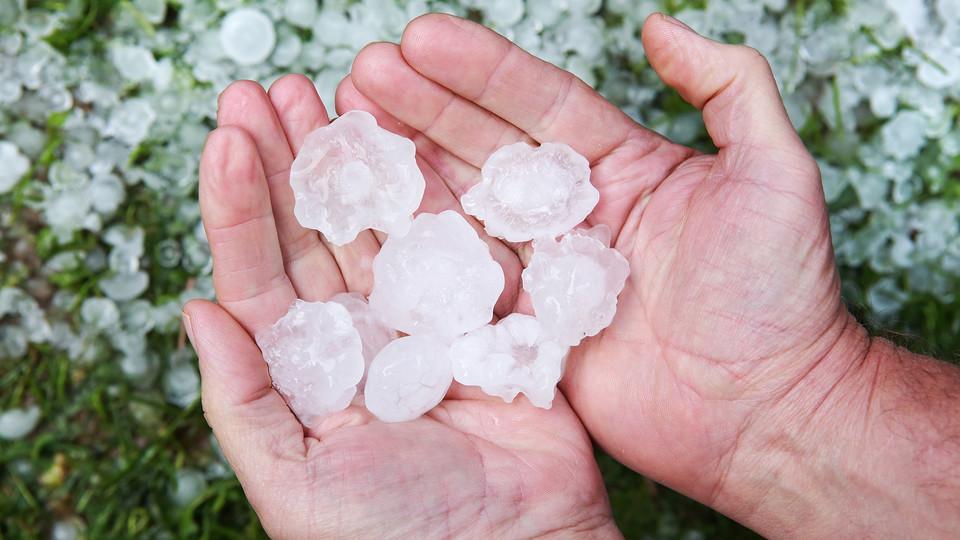· 2 min read
When hail strikes, Nebraska Extension has answers

When hail strikes and growers have questions, Nebraska Extension has new resources to answer them through a program called “Hail Know.”
Annually, hail causes more than $1 billion in economic losses. In Nebraska, hail-producing storms are common during the planting and growing seasons. Half of all hailstorms occur during the early stages of corn growth. This often causes frustration and anxiety for growers concerned about the fate of their crops and whether additional management or replanting is warranted.
“Hail Know was created to build upon and expand Nebraska Extension’s hail-related programs,” said Ashley Mueller, Nebraska Extension’s disaster education coordinator and leader of the project. “In the aftermath of a hailstorm we want growers to know that they can turn to Nebraska Extension for the answers and certainty they need to make sound, research-based decisions to manage their crop.”
Hail Know features videos, graphics and articles by a team of extension experts in climate science, agronomy, engineering, agricultural technology, economics and disaster education.
In recent weeks, severe storms with hail left behind a wake of destruction in corn and soybean fields in parts of central and eastern Nebraska. Through Hail Know, growers can learn how to conduct a crop damage assessment. The assessment offers factors to consider when assessing damage early-season, in-season and late-season. When deciding whether to replant corn or soybeans, Hail Know recommends considering the yield potential of the replanted crop, previously applied herbicides and relative maturity of the crop, among other factors, when assessing the damage.
“The best advice following a hailstorm is to have patience. Emotions run high when hail decimates fields, but it’s best to wait seven to 10 days following the storm to allow for plant recovery before assessing damage,” said Mueller.
In addition to damage assessment, Hail Know also offers information on hail formation and storms, crop insurance and risk management, replanting consideration, managing a recovering crop and cover crops.
Learn more about Hail Know online or follow project Twitter account.
The development of Hail Know was funded by a USDA National Institute of Food and Agriculture Smith-Lever special needs grant with matching funds from the University of Nebraska–Lincoln.







